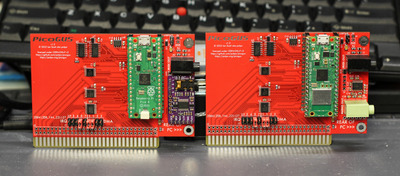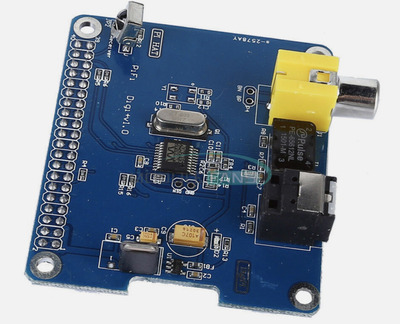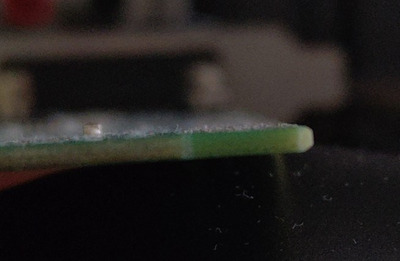appiah4 wrote on 2023-12-14, 06:51:
I guess I don't feel quite adventurous enough to build a v1.2 while v1.1 works perfectly in my 486 but I'd love to see someone else do it and report back with any compatibility or audio quality improvements from the reset and dac integration changes 😀
If your v1.1 board works fine for you, there's really not much improvement in v1.2! Audio quality should be the same, as long as you get a purple DAC module that actually works... they can be flaky.
wbc wrote on 2023-12-14, 12:11:I'd bet that with a proper wiring and PIO hackery it's more than possible to output S/PDIF through MIDI Out header/jack 😀 the only issue is GUS emulation drops sample rate wien using more than 14 channels (down to 19 kHz for 32 channels), and I am not sure if SPDIF receivers will handle those rates properly.
Coax through the MIDI out jack wouldn't be possible due to its open drain circuit, but optical toslink out via an adapter is totally possible since after all, MIDI receivers are just blinking an LED in an optoisolator. There's code for spdif audio out in the pico_extras audio library that I use that would just drop in but like wbc says, the issue is non-standard sampling rates. GUS *might* be able to be forced to 44.1kHz (I still need to experiment with this) but OPL2 is at a totally weird 49.716kHz. Resampling to 44.1 or 48kHz on the Pico probably wouldn't give you the best quality so I'm not super excited about that. It does make me wonder what the Orpheus cards do for their SPDIF output... Tandy and CMS are constant 44.1kHz so those would probably "just work." It's kind of ironic that the lowest-fi audio modes are the ones that are easiest to have SPDIF output. 😄
Pickle wrote on 2023-12-14, 13:36:
Do you have plans to add the wavetable connector to this design of the pcb?
Or what are you thoughts of mod'ing < 1.2 v with an connector.
I have no plans to add wavetable to this type of PCB... that's what the v2.0 board is for in my mind. I do have a more "DIY-able" wavetable design with passive volume control on the Femto Edition's ISA adapter, and I welcome anyone who wants to try a design based on that.


